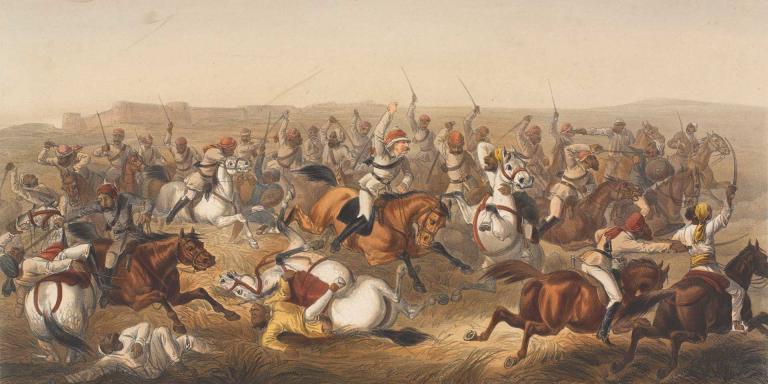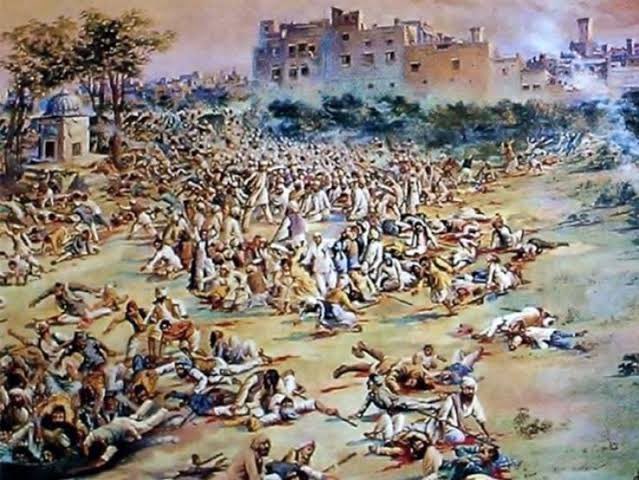Independence Day 2024: Gaining independence from the British wasn't an easy feat to achieve for India. Many freedom fighters have sacrificed their lives and endured immense hardships in the struggle for independence.
Despite facing numerous challenges and obstacles, India gained liberty from the British Raj on August 15, 1947, marking a significant milestone in its history. Although India saw a catastrophic partition that led to the creation of Pakistan, India still emerged as a sovereign nation with a rich cultural heritage and diverse population.
However, if you are curious about the various events that happened during the independence movement, you've landed in the right place. In this article, we've compiled a comprehensive timeline of the key events that shaped Indian history.
You Might Like: Which Independence Day 2024? Is it 77th or 78th this year? Check Here
The complete timeline of Indian Independence Day
| Year | Event |
| 1600 | The British East India Company is established. |
| 1608 | The British East India Company sets up its first trading post in Surat. |
| 1615 | Sir Thomas Roe obtains trading rights for the British from Mughal Emperor Jahangir. |
| 1757 | Battle of Plassey: British forces under Robert Clive defeat Nawab Siraj-ud-Daulah, marking the start of British political control in India. |
| 1764 | Battle of Buxar: British defeat the combined forces of Mughal Emperor Shah Alam II, Nawab of Oudh, and Nawab of Bengal, establishing British control over Bengal. |
| 1773 | Regulating Act passed by British Parliament, leading to greater control of British territories in India. |
| 1784 | Pitt's India Act passed, establishing dual control of British India by the British government and the East India Company. |
| 1793 | Permanent Settlement of Bengal, a land revenue system introduced by Lord Cornwallis. |
| 1829 | Abolition of Sati by Governor-General Lord William Bentinck. |
| 1853 | First railway line in India opens between Bombay and Thane. |
| 1857 | The Indian Rebellion of 1857 (First War of Indian Independence) begins, marking a significant uprising against British rule. |
| 1875 | Establishment of the Indian League |
| 1876 | |
| 1882 | Hunter Commission |
| 1883 | Ilbert Bill proposed by Lord Ripon |
 Source: National Army Museum
Source: National Army Museum
| 1884 | Ilbert Bill passed |
| 1885 | Establishment of INC. First INC Session was held in Bombay from 28 to 31 December 1885. |
| 1897 | Ramakrishna Mission was founded by Swami Vivekanand |
| July 1905 | Partition of Bengal was announced by Lord Curzon |
| 16 October 1905 | Partition of Bengal |
| 31 December 1906 | All-India Muslim League Founded at Dhaka |
| 1907 | Surat Split of INC |
| 11 August 1908 | Execution of Khudiram Bose |
| 1909 | Minto-Morley Reforms or Indian Councils Act 1909 Was passed |
| 1910 | Indian Press Act |
| 1911 | Cancellation of Partition of Bengal |
| April 1916 | Home Rule by Bal Gangadhar Tilak |
| December 1916 | Lucknow Pact |
| 1917 | |
| 1918 | Madras Labour Union was formed |
| 1919 | Montagu-Chelmsford Reforms |
| 16 February 1919 | Rowlatt Act Passed |
| 13 April 1919 | |
| 1920-22 | |
| 5 February 1922 | Chauri-Chaura Movement |

Source: MK Gandhi organisation
| Late 1922 - Early 1923 | Swarajya Party came into existence |
| 1925 | |
| 1927 | Establishment of Simon Commission |
| 1928 |
|
| 3 February 1928 | Simon Commission arrives in India |
| December 1929 | Purna Swaraj Declaration at Lahore Session |
| 8 April 1929 | Bhagat Singh & Batukeshwar Dutt bombed Central Legislative Assembly |
| 18 April 1930 | Chittagong Armoury Raid |
| 12 March 1930 | |
| 6 April 1930 | Dandi March Ends |
| 30 November 1930 | 1st Round Table Conference |
| 5 March 1931 |
|
| 7 September 1931 | 2nd Round Table Conference |
| 1932 |
|
| 1935 | Government of India Act |
| 22 June 1939 | All India Forward Bloc formed |
| 18-22 August 1940 | August Offer by Lord Linlithgow |
| 1942 | |
| 1942 |
|
| 1945 | Wavell Plan announced in Shimla Conference |
| 1946 | Cabinet Mission |
| June 1947 | |
| 1947 | Indian Independence Act |
| 14 August 1947 | |
| 15 August 1947 | India Gained Freedom From Colonial Rule |
.jpg) Source: The Daily Guardian
Source: The Daily Guardian
When and Why Did the British Came to India?
The British arrived in India in 1608 at the port of Surat, primarily as merchants seeking to capitalise on the lucrative spice trade.
The British East India Company chartered in 1600, was at the forefront of this venture. India, with its rich resources and vibrant markets, presented an irresistible opportunity for European traders.
The allure of Indian trade was undeniable. Spices, textiles, and other valuable commodities were in high demand in Europe. Initially, the British relationship with the Mughal Empire was largely peaceful, with the company establishing trading posts and factories. However, the desire for greater control over resources and markets gradually transformed the company's role.
Several factors contributed to the British transition from traders to rulers:
- Economic Motives: As the company's profits grew, so did its ambitions. The desire to eliminate competition, secure raw materials, and expand markets led to a more aggressive stance.
- Political Rivalries: The European powers, including the Portuguese, Dutch, and French, were vying for control of Indian trade. The British, through strategic alliances and military might, gradually gained an edge.
- Exploitation of Indian Divisions: The Mughal Empire was experiencing decline, and regional power struggles created opportunities for the British to intervene and assert their dominance.
- Military Superiority: The British East India Company possessed advanced weaponry and military tactics, giving it a significant advantage in conflicts with Indian rulers.
The turning point came in 1757 with the Battle of Plassey, where the British, led by Robert Clive, defeated the Nawab of Bengal. This victory marked the beginning of British territorial expansion in India. The company gradually consolidated its power, exploiting Indian weaknesses and using a combination of diplomacy, force, and economic pressure to expand its dominion.
By the 19th century, the British East India Company had become a powerful entity, virtually ruling large parts of India. However, the growing discontent among the Indian population eventually led to the Indian Rebellion of 1857. This uprising forced the British Crown to take direct control of India, ending the company's rule and ushering in the era of the British Raj.
More to Explore: Independence Day 2024: History Quiz On Freedom of India
Conclusion
The national holiday will be celebrated throughout the country with flag-hoisting ceremonies, parades and cultural events. PM Narendra Modi will hoist the tricolour at the Red Fort and will award security personnel and forces. As Independence Day approaches, the government's 'Viksit Bharat' theme aims to highlight the vision of a developed India by the year 2047.
Also Read: The Lost Stories of Forgotten Fighters of Indian Independence
Happy Independence Day!
Comments
All Comments (0)
Join the conversation